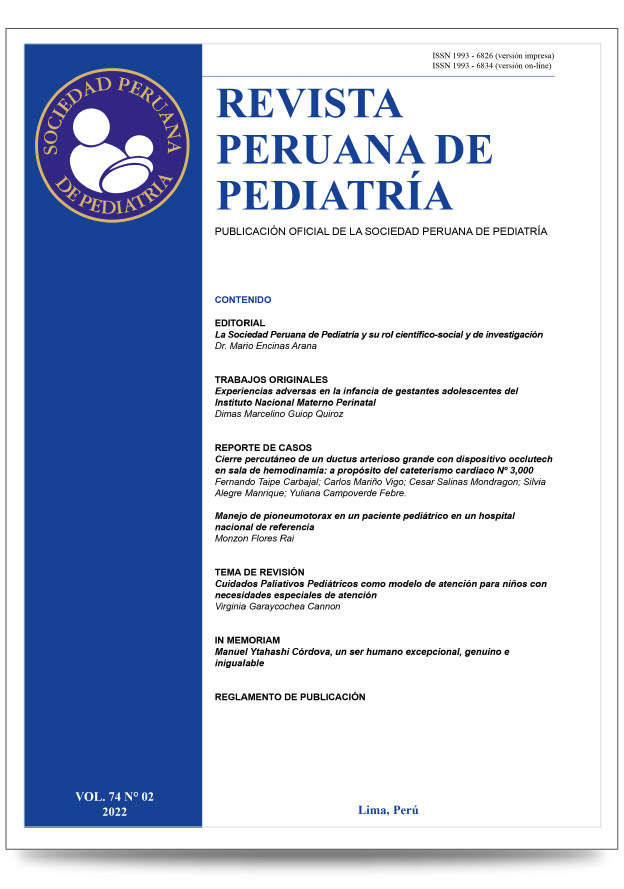Percutaneous closure of a large ductus arteriosus with occlutech device in hemodynamics room: about cardiac catheterization Nº 3,000
DOI:
https://doi.org/10.61651/rped.2022v74n2p15-20Keywords:
Ductus Arteriosus, Cardiac Catheterization, Heart FailureAbstract
Patent ductus arteriosus accounts for about 10% of congenital heart disease. Currently the preferred treatment is percutaneous closure, being the treatment of choice in most pediatric patients.
Percutaneous closure prevents the progression of heart failure, the appearance of pulmonary hypertension, and the risk of bacterial endarteritis. Since the first intervention by Porstmann, in 1967, many interventionists have described various techniques and developed different devices for the percutaneous closure of patent ductus arteriosus (PDA).
By the way, we present the case of a large PDA closure that constitutes cardiac catheterization No.3,000, since the procedures began in 1983 by Dr.Cesar Salinas, in the first cardiopediatric center in the country.
Downloads
Downloads
Published
How to Cite
Issue
Section
Categories
License

This work is licensed under a Creative Commons Attribution 4.0 International License.
Authors will retain the copyright and grant the right to publish their work in the journal while allowing third parties to share it under the Creative Commons Attribution license.
Articles are published under a Creative Commons license that allows sharing and adaptation with appropriate credit. CC BY 4.0 license. Available in English at https://creativecommons.org/licenses/by/4.0/
Authors may use other information disclosure formats as long as the initial publication in the journal is cited. The dissemination of the work through the Internet is recommended to increase citations and promote academic exchanges.
The published content does not necessarily reflect the specific point of view of the journal, and the authors assume full responsibility for the content of their article.




